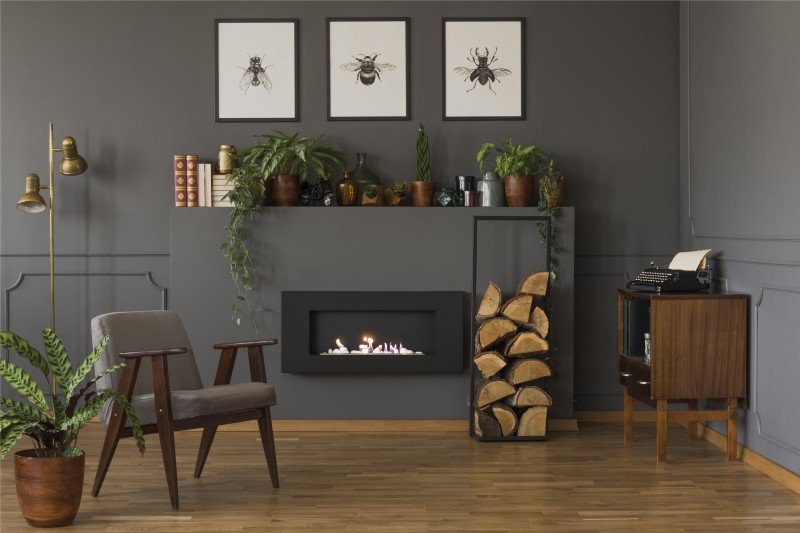20 Fireplace Websites Taking The Internet By Storm
The Fireplace: A Warm Embrace of Tradition and Comfort
Fireplaces have been an important part of human habitation for centuries, acting as a source of warmth, a gathering location, and a sign of convenience. While the modern versions may differ extremely from their ancient forefathers, the allure of a fireplace endures. This short article explores the various elements of fireplaces, including their history, function, types, and maintenance, while also attending to often asked questions.
The Evolution of Fireplaces
Fireplaces date back to prehistoric times when open flames were utilized for cooking, heating, and protection from wildlife. Over the centuries, fireplaces developed from basic fire pits to the advanced performances we see today. Here is a quick timeline of their evolution:
- Prehistoric Era: Cavemen utilized open flames for warmth and cooking. Wind and smoke frequently blew into dwellings.
- Middle Ages: Stone and brick fireplaces became typical in homes and castles, integrating chimneys to carry smoke outside.
- Renaissance: Elaborately created mantels emerged, and fireplaces became centers of social interaction.
- Industrial Revolution: Innovations in heating products resulted in a range of designs and performances.
- Modern Era: The introduction of gas, electric, and bioethanol fireplaces provided cleaner options to traditional wood-burning units.
Table 1: The Evolution of Fireplaces
Age
Qualities
Prehistoric Era
Open flames for warmth and cooking
Middle Ages
Stone and brick structures with early chimneys
Renaissance
Elaborate mantels, social centers
Industrial Revolution
Diverse styles, introduction of new materials
Modern Era
Gas, electric, and bioethanol alternatives
The Purpose of a Fireplace
Fireplaces serve double purposes: they offer physical heat and develop an emotional environment. Property owners typically collect around the fireplace to bond, share stories, and take pleasure in a cozy setting. The glow of a fire can be soothing, contributing to a sense of relaxation and intimacy. Beyond personal enjoyment, fireplaces also use practical advantages, consisting of:
- Home Heating: Effective heat source, specifically in cooler environments.
- Increased Home Value: A properly designed fireplace can boost the aesthetic value of a home.
- Emergency situation Heating: In case of power blackouts, wood-burning fireplaces can serve as a vital heat source.
- Aesthetic Appeal: A centerpiece that contributes to interior decoration.
Types of Fireplaces
Today, fireplaces come in different styles and fuel types, accommodating a varied variety of choices and settings. Here are some typical types:
Wood-Burning Fireplaces:
- Traditional fire pits
- Timeless masonry fireplaces
- Need significant maintenance and chimney upkeep
Gas Fireplaces:
- Available in both direct vent and ventless ranges
- Much easier to use and keep than wood-burning fireplaces
- Supply immediate heat with a flick of a switch
Electric Fireplaces:
- Offer associated heat sources without real flames
- Frequently designed to mimic traditional fireplaces
- Suitable for smaller areas and homes without a chimney
Bioethanol Fireplaces:
- Use bioethanol fuel, supplying a sustainable alternative
- Require no ventilation and can be placed anywhere
- Safe and easy to preserve
Table 2: Types of Fireplaces
Type
Fuel Source
Features
Upkeep Requirements
Wood-Burning
Wood
High atmosphere, heat source
Regular chimney cleaning
Gas
Natural gas or propane
Instantaneous heat
Very little, periodic maintenance
Electric
Electricity
Easy setup
Extremely low maintenance
Bioethanol
Bioethanol fuel
Ventless, portable
Low, generally cleaning up
Maintenance and Safety Considerations
Owning a fireplace involves specific duties, specifically regarding its safe operation and long-lasting maintenance. Here are very important upkeep pointers and safety guidelines:
Maintenance Tips:
- Annual Inspection: Always have your chimney and fireplace examined a minimum of once a year by a certified service technician.
- Routine Cleaning: Clean out ashes and debris after each usage, and make sure the flue is open before starting a fire.
- Look for Cracks: Inspect masonry for fractures or damage to avoid structural concerns.
- Use Proper Fuel: Only use dry, seasoned wood for wood-burning fireplaces; do not burn cured wood.
Safety Guidelines:
- Install Smoke Detectors: Ensure smoke alarm are practical, checking them monthly and replacing batteries as required.
- Keep a Fire Extinguisher: Have one nearby, even if a fireplace is used occasionally.
- Monitor Flames: Never leave a fire unattended, and guarantee kids and family pets are monitored around the fireplace.
Often Asked Questions (FAQs)
1. How can I lower smoke from a wood-burning fireplace?
To lessen smoke, use dry, experienced wood, and ensure that your chimney is tidy and unblocked.
2. Is Buy Fireplace UK to utilize gas fireplaces during a gas leak?
Never ever utilize a gas fireplace during a gas leak. Immediately evacuate the location and contact gas services for help.
3. Can I set up an electric fireplace myself?
Electric fireplaces are normally easy to set up, however it is recommended to talk to professionals to guarantee security and compliance with regional building regulations.
4. What is the best type of fireplace for small spaces?
Electric fireplaces or bioethanol models are typically best for small spaces, as they do not require extensive ventilation or structural adjustments.
Fireplaces have transcended their initial purpose of providing heat to become valued aspects of home style and household life. They evoke memories of heat, celebrations, and togetherness while providing functional benefits that boost modern living. By understanding the different kinds of fireplaces, their maintenance, and security practices, house owners can enjoy the classic appeal of this beloved feature for generations to come.
